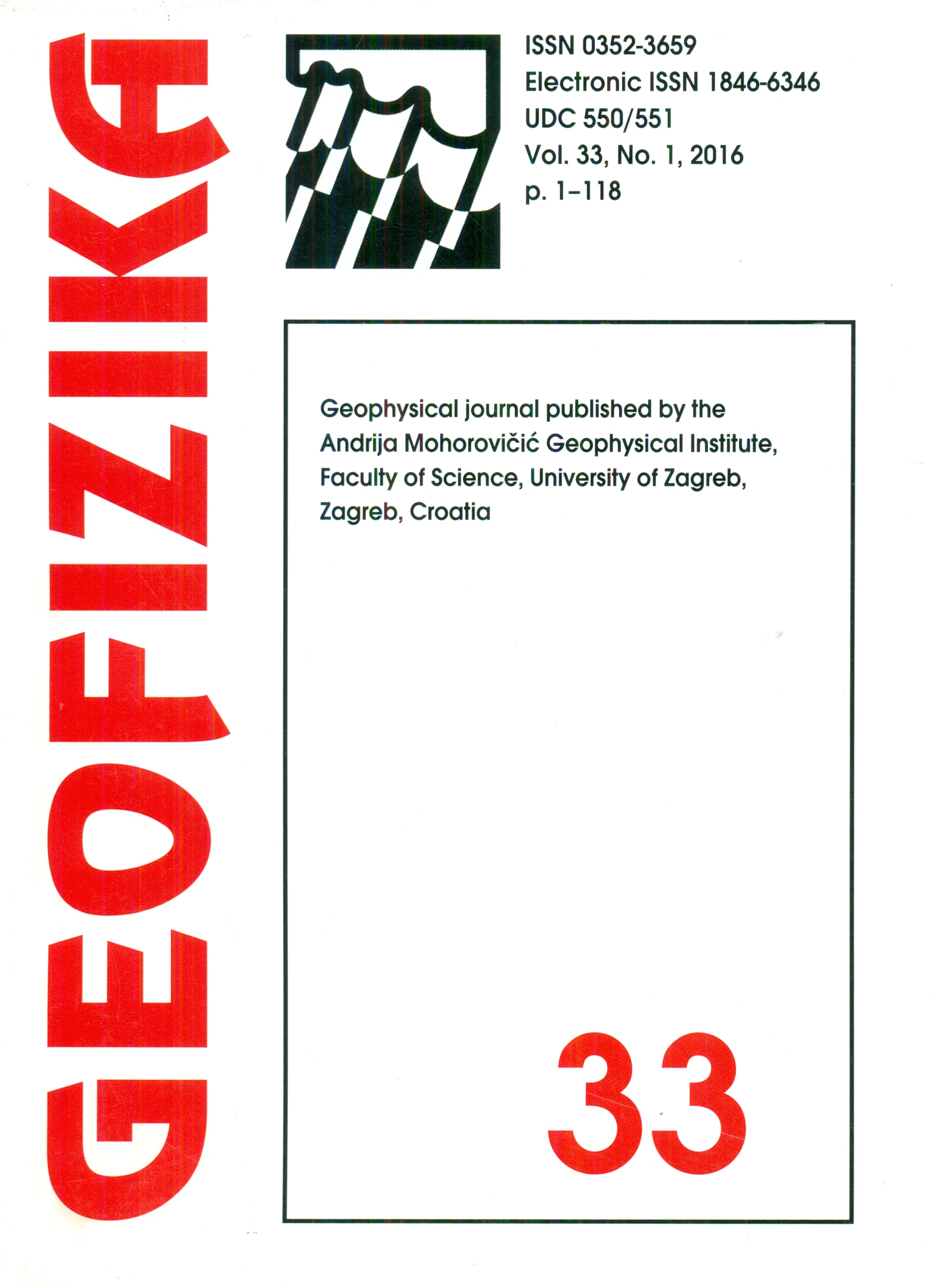Modelling origin and transport fate of waste materials on the southeastern Adriatic coast (Croatia)
DOI:
https://doi.org/10.15233/gfz.2016.33.3Keywords:
Adriatic, drifter trajectory, numerical models, flash floodAbstract
In this study we analysed meteorological and oceanographic conditions that lead to the waste deposition along the southeast Croatian coast during the second half of November 2010. We used available in situ measurements, atmospheric products (reanalysis, remote sensing) as well as atmosphere and ocean numerical models. The measured meteorological data reveal that an intensive rainfall event occurred from 7 till 10 November 2010, over the parts of Montenegro and Albania. It was followed by a substantial increase of the river water levels indicating a possibility of flash floods, capable of splashing the waste material into a river and after to the Adriatic Sea (or to the sea directly). The currents that could bring this waste to Croatian coast are likely intensified by the strong wind from southeast direction. In order to test these two hypotheses we set a number of numerical drifter experiments with trajectories initiated over southeast Adriatic during the intensive rainfall events following their path in space and time. The numerical drifter trajectory experiments that resulted with drifters reaching the right position (southeastern Adriatic coast) at exact time the waste was observed were initiated on 00:00 and 12:00 UTC of 10 November 2010 during the mentioned high precipitation event.
Downloads
Published
Issue
Section
License
Copyright (c) 2021 Geofizika journal

This work is licensed under a Creative Commons Attribution-NonCommercial 4.0 International License.

